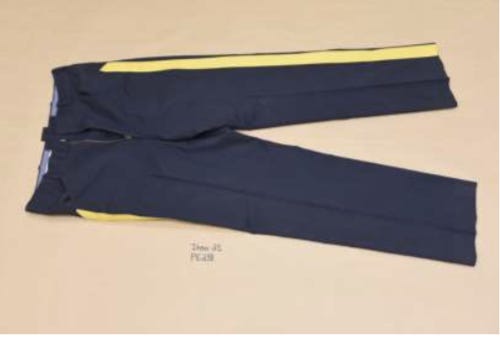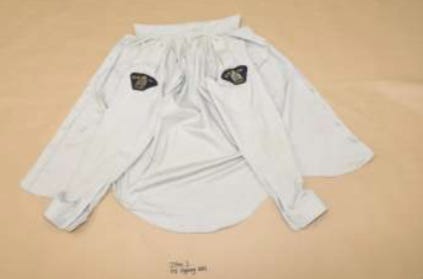RCMP burns 7,000 lbs of uniforms & kit
Destruction an effort to stop police impersonators like N.S. mass murderer
RCMP in Nova Scotia ordered a mass incineration of discarded Mountie clothing and kit in the province after a murderer disguised as an RCMP officer gunned down 22 people over a weekend.
The force’s “H” division burned some 7,000 pounds of used shirts, trousers, jackets, boots and body armour in an effort to keep uniforms and other gear out of the hands of criminals intending to impersonate police. The incineration, carried out by a contracted business in Prince Edward Island, cost the force about $5,700.
Normally, individual RCMP detachments have been responsible for disposal of discarded uniforms and kit, but questions have been raised about whether the required destruction was being carried out consistently and thoroughly.
The Nova Scotia mass incineration in March 2021, the first ever conducted by “H” Division, was prompted by the gruesome string of murders.
On April 18-19, 2020, a man in Portapique, N.S., driving a replica Mountie patrol car and wearing genuine RCMP clothing gunned down 22 people, including an RCMP officer and a pregnant woman.
An inquiry later determined that the killer acquired RCMP clothing from relatives who were former Mounties and who had retained some of their uniforms. He had also outfitted a decommissioned RCMP patrol car with decals, insignia and equipment, much of it acquired in the after-market, through online and other sales.
The Mass Casualty Commission report in March 2023 said the RCMP needed to do a better job tracking and disposing of used clothing and equipment to prevent gear falling into the hands of police impersonators.
An internal review of RCMP procedures, completed in October 2023, revealed that the Nova Scotia “H” Division had incinerated some 7,000 pounds of accumulated clothing and kit that was no longer required, or an average of seven pounds for each of the province’s 1,000 officers.
The high number suggests the province’s 55 detachments had not been carrying out routine disposal as required. The review found that the force’s “disposal guidance” for individual units across the country was “unclear” and that policies were inconsistent. Some detachments left it up to individual officers “to burn items on their personal property.” Others “recycled” the items.
A version of the findings, entitled “Review of Uniform and Dress Manual Policy Changes,” was recently posted on the RCMP website. But a section referring to “disposal challenges” is blacked out with significant redactions.
The review covered the period between April 1, 2019, and Dec. 31, 2021, which included the months before and after the Nova Scotia mass murder.
A spokesman for the Nova Scotia RCMP, Corp. Guillaume Tremblay, said the recent mass disposal included “duty belts, jackets, trousers, shirts, headgear, boots, soft and hard body armour.”
“The uniforms and issued equipment were disposed of by incineration, which is the most fiscally and environmentally sound method of secure destruction,” he said in an email. Tremblay said the force did not previously collect disposal statistics, and that responsibility for disposal has since reverted back to RCMP detachments, with no province-wide tracking.
In the aftermath of the 2020 mass murder, the Nova Scotia legislature passed the Police Identity Management Act in 2021 to curtail fraudulent use of police kit, including uniforms and vehicles.
“No person shall display the word ‘police’ … on a uniform, an article of clothing, an insignia or a vehicle or another sign or symbol if the display of the word ‘police’ might mislead the public,” says one of its clauses.
In early 2021, the federal government imposed a moratorium on the sale of used Mountie vehicles, and has resisted calls by the RCMP to lift the ban. The RCMP has taken other measures, such as removing the word “Police” from the shoulder flashes on the grey shirts worn by civilians in its volunteer Pipes and Drums Bands.
Dean Beeby is author of Mass Murder, Police Mayhem - The Mass Casualty Commission: The Facts, the Findings and What Must Be Done (Formac, 2023)





